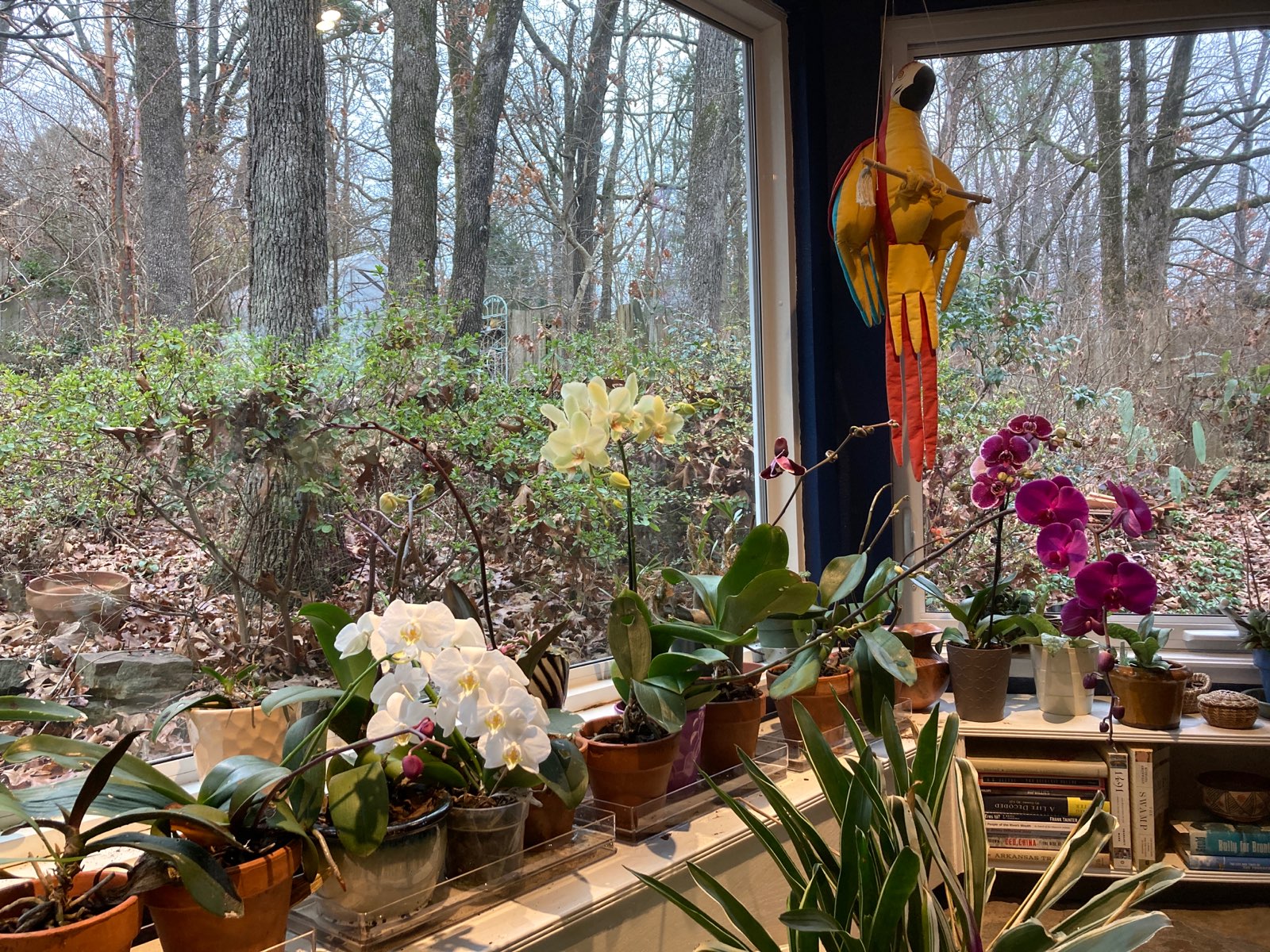Resource Library
Plant of the Week: Phalaenopsis reblooming
During these shut-in days of the pandemic I’ve noticed, as reporters and talking heads do their pontificating from their homes, that the white phalaenopsis orchid is by far the most popular flowering houseplant I see. I too like the phalaenopsis orchid and consider it perhaps the best value in the flowering houseplant trade. Available almost everywhere, often for around a 10 spot, it will stay in bloom for two months and, with minimal care, can be rebloomed. What a bargain.
About 60 species of Phalaenopsis are known but the plants we grow are all complex hybrids, mostly created since the end of the Victorian era. Phalaenopsis orchids didn’t fit well into the Victorian scheme of living because the unheated front parlors where the ferns were displayed were too cold while the overly-hot back parlors where the stove plants were kept were too warm.
After the Victorian craze passed, orchids primarily found their commercial niche as cut flowers in the middle years of the 20th century. Phalaenopsis hybrids gained prominence during this time but nowhere near that of the Cattleya orchid. During the 20th century orchids moved from the realm of exotic playthings for the rich to attracting the interest of curious biologists and commercial greenhouse growers who undertook efforts to understand the complexities of orchid hybridization, seed germination and vegetative propagation.
During the 1960s and ‘70s, most of the broad aspects of orchid growing were understood but a lot of time was needed to grow a blooming plant from either tissue culture or seed. Most orchid species required five years or more to bloom, but by 1980 it was understood that Phalaenopsis could be grown to blooming size from seed or tissue culture starts in as little as 18 months. From 1980 to 2000, an international production chain was developed that exploited new technologies and marketing opportunities: new hybrids were produced in the United States, while these same plants were tissue culture propagated in Japan; these flasked plants were then shipped to China where they were grown through the liner stage and then shipped to Netherlands for flowering.
As plants became more available, some of the liner-size plants were shipped to U.S. greenhouses for flowering. American TC labs became more involved in orchid production and – depending on market conditions – more or less of the growing steps were performed here. In 20 years’ time, a rare hybrid phalaenopsis that would have sold for $80 to an orchid collector turned into a commodity available at your local big box store for $10. In 2015 orchids – most of which were Phalaenopsis – were the most popular pot plant in the United States, with sales in excess of $288 million.
I recognize that Phalaenopsis orchids are a “gateway orchid” that can, and in my case did – lead me into trying all sorts of other orchids. But the only orchid species I’ve successfully rebloomed is the Phalaenopsis. That is because growing and reblooming it is so easy. The plants like the same kinds of conditions we enjoy – a comfy room temperature and bright light but not necessarily direct sun. I water my plants – in bloom or not – about once every 10 days. My inherent laziness about not fastidiously watering and misting any plant may explain my failure to rebloom the other orchid species.
When the blooms finally drop from the spike, cut it back to a stub about four inches long. If this happens in early winter, the plant often sends out a second spike from this stub that will produce blooms into May. I over-summer my plants outside under the trees where they get bright light but not direct sun. Summertime watering is pretty hit and miss, but if the other houseplants I move out each summer need it, I’ll water the orchids, too.
I don’t repot the orchids the first summer but may do so the second year. Fertilizing with a diluted, general purpose liquid houseplant fertilizer during their summer stay outdoors will encourage better growth, but my fertilization is like my watering, pretty hit or miss. Relocate the plants indoors before the likelihood of frost arrives, returning them to a bright location without full sun. Plants begin sending up spikes in December with flowers opening about a month later. For only a few bucks you can buy a new plant, but what’s the fun of that?
For more information about horticulture or to see other Plant of the Week columns, visit Extension’s Website, www.uaex.uada.edu, or contact your county extension agent. The Cooperative Extension Service is part of the U of A Division of Agriculture.
